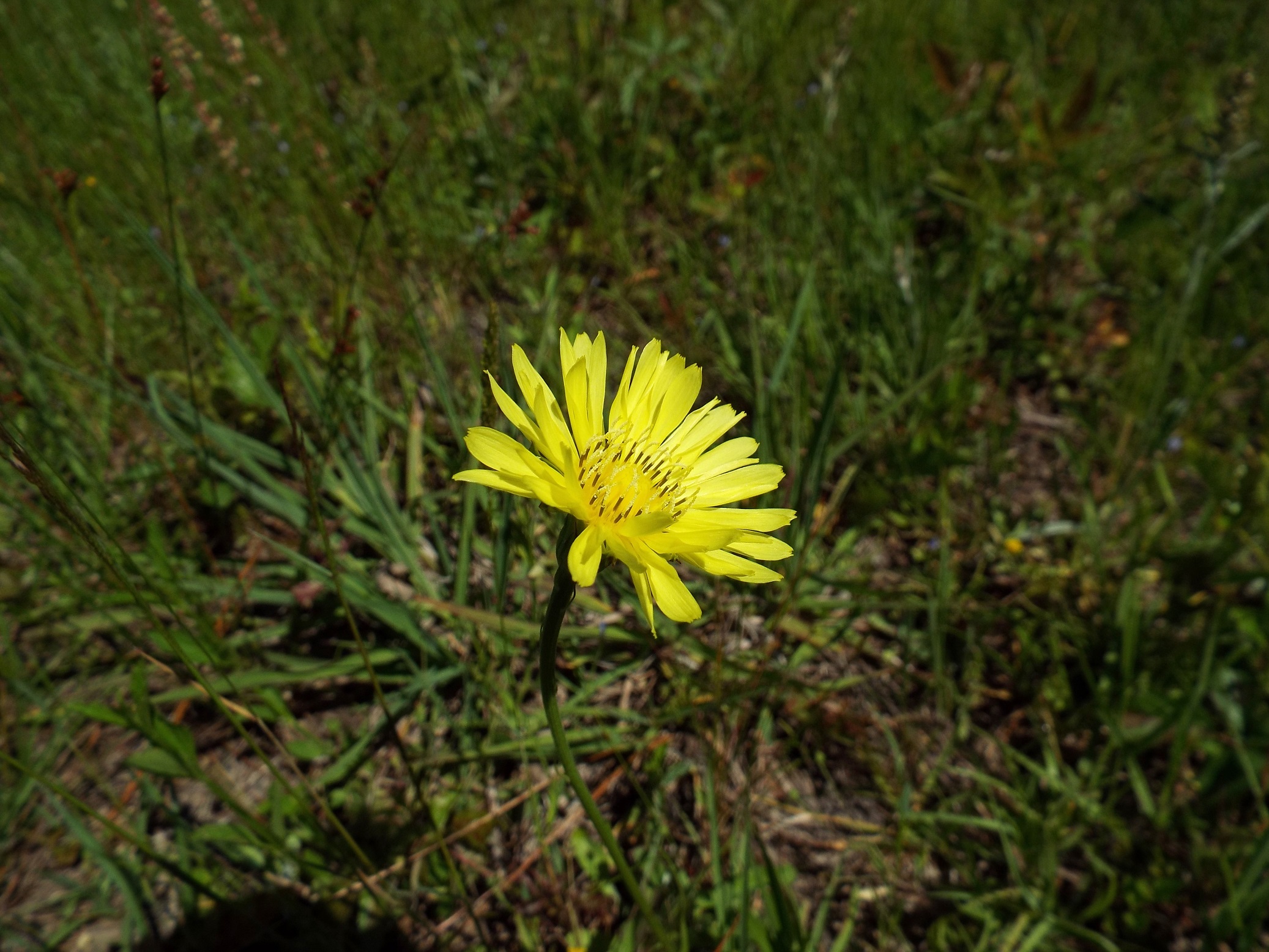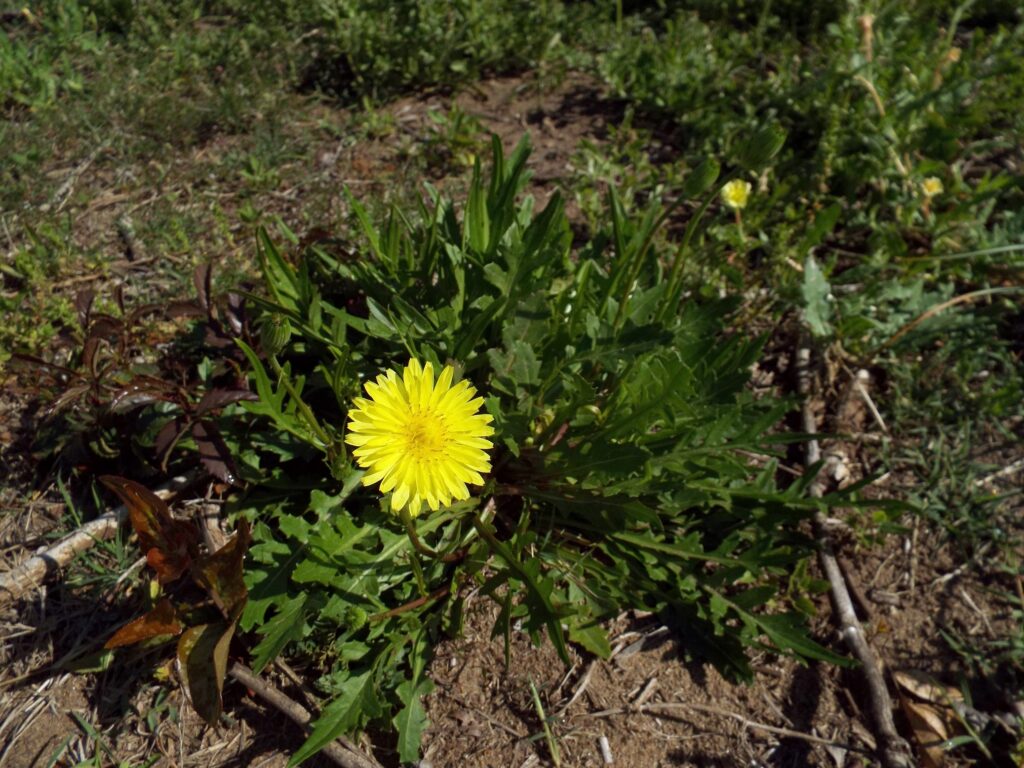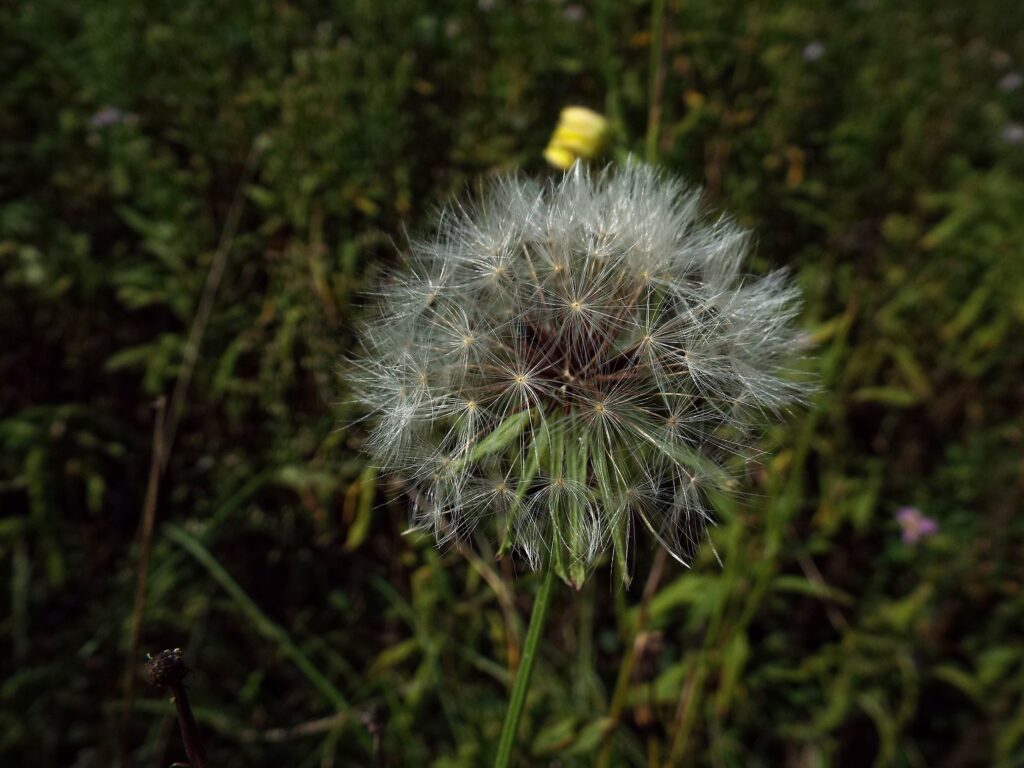



This week for Flora and Fauna Friday, we’ve got another common lawn and garden weed. We’re examining Carolina Desert-Chicory, or Carolina False-Dandelion, (Pyrrhopappus carolinianus).
Carolina Desert-Chicory is a native wildflower that blooms from early spring until late fall. It grows as a rosette of long, simple leaves that are sometimes lobed. It produces singular bright yellow flowers one to two inches across. These are a compound flower made of dozens of tiny ray florets. A ray floret is a small flower, unique to the Aster family, that has only a single long petal. Many of these ray flowers are combined to create a larger compound head-flower. These flowers are not the biggest pollinator magnet but they are a reliable and dependable source of nectar for bees and butterflies throughout the year. The fruit is a cluster of achenes. An achene is a dry fruit with a single seed inside a solid hull. Just like a Dandelion, each seed sports a fluffy sail-like tail that ensures the wind will carry them far and wide. Carolina Desert-Chicory is found in a variety of sunny habitats including lawns, fields, roadsides, meadows, forest edges, and glades. Their wind dispersed seeds make them one of the first species to establish on cleared land.
Carolina Desert-Chicory is often mistaken for the invasive Common Dandelion because the two species are quite similar. Luckily, there are a few features that distinguish them. The leaves of the two plants are the best distinguishing feature. The leaves of Dandelions are always lobed and look jagged along the edges, like a barbed spearhead. Carolina Desert-Chicory is either a simple elliptical leaf or a smoothly lobed leaf like a White Oak. Dandelions are low growing and their flowers only get about 6 inches above the ground. Desert-Chicory is typically taller and, although it will bloom relatively low to the ground, can reach up to two feet in height. This is because Dandelions don’t form stems. They flower directly from the rosette. However, Desert-Chicory does form stems and will often have one or more leaves below the flower. Also, the flowers of Desert Chicory are a paler yellow.